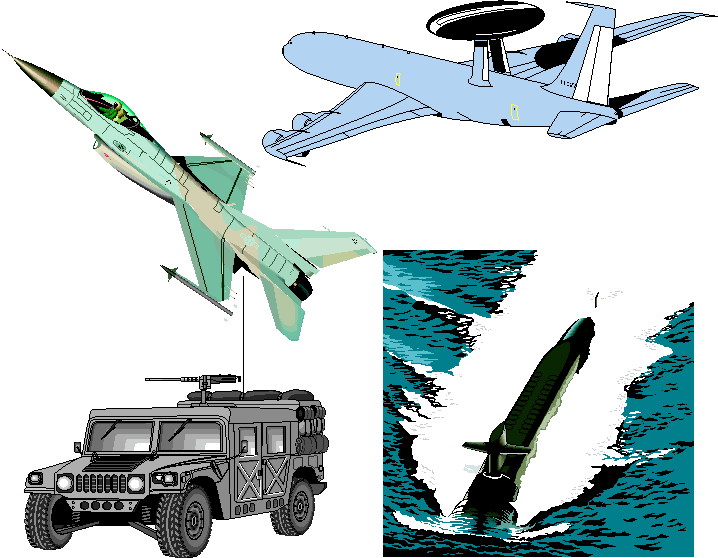Case Study - Defence Procurement
 Program Management in Defence has a different emphasis - the projects are mainly large,
long term, contracted out, and vital. The emphasis shifts to supporting the transition
from mission statement through requirements elicitation to tendering to project support,
with the interactions among projects being considered either at the concept development
level, or at the level of effects on the defence industry. The mission statement itself
may have many alternative implementations, each with an effect on cost, life, long term
survivability. Some form of Program Management is also essential at the tender evaluation
stage, as different vendors will implement the objectives in different ways that are quite
difficult to compare on a rational basis.
Program Management in Defence has a different emphasis - the projects are mainly large,
long term, contracted out, and vital. The emphasis shifts to supporting the transition
from mission statement through requirements elicitation to tendering to project support,
with the interactions among projects being considered either at the concept development
level, or at the level of effects on the defence industry. The mission statement itself
may have many alternative implementations, each with an effect on cost, life, long term
survivability. Some form of Program Management is also essential at the tender evaluation
stage, as different vendors will implement the objectives in different ways that are quite
difficult to compare on a rational basis.
Planning proceeds in a hierarchical fashion, with the initial mission
statement being promulgated at strategy level, then moving through implementation planning
to tendering and project owner overview. Some projects are sufficiently complex to justify
the use of a Constraint Reasoning approach by the vendor. This flow of concept to
implementation is a good example of where embedding of the strategic directives in the
program can be used to guide individual projects as their details firm up.
The continuous monitoring of the combination of projects
allows the likely effects of budget blowouts of existing projects on strategic flexibility
and planned projects to be assessed.
An advantage of Constraint Reasoning in this area is the much greater
transparency of the process. If a plan cannot describe the dynamics of the decision
making, vendors may not be guided towards the best solution, or may be aggrieved that
their bids were not chosen. CRM's ability to represent variability and logical interaction
avoids the single choice and allows more of the decision criteria to be represented in the
plan.
Program Management
 Program Management in Defence has a different emphasis - the projects are mainly large,
long term, contracted out, and vital. The emphasis shifts to supporting the transition
from mission statement through requirements elicitation to tendering to project support,
with the interactions among projects being considered either at the concept development
level, or at the level of effects on the defence industry. The mission statement itself
may have many alternative implementations, each with an effect on cost, life, long term
survivability. Some form of Program Management is also essential at the tender evaluation
stage, as different vendors will implement the objectives in different ways that are quite
difficult to compare on a rational basis.
Program Management in Defence has a different emphasis - the projects are mainly large,
long term, contracted out, and vital. The emphasis shifts to supporting the transition
from mission statement through requirements elicitation to tendering to project support,
with the interactions among projects being considered either at the concept development
level, or at the level of effects on the defence industry. The mission statement itself
may have many alternative implementations, each with an effect on cost, life, long term
survivability. Some form of Program Management is also essential at the tender evaluation
stage, as different vendors will implement the objectives in different ways that are quite
difficult to compare on a rational basis.